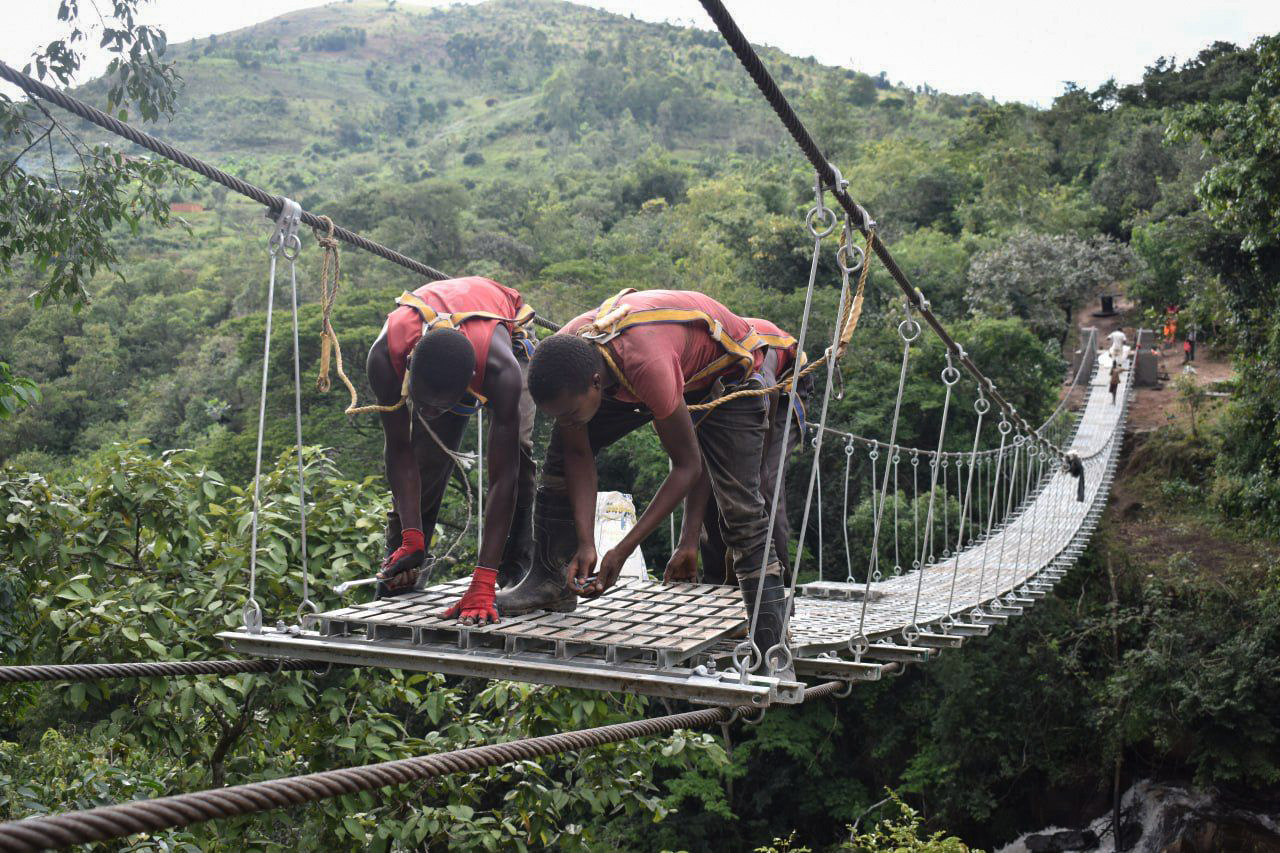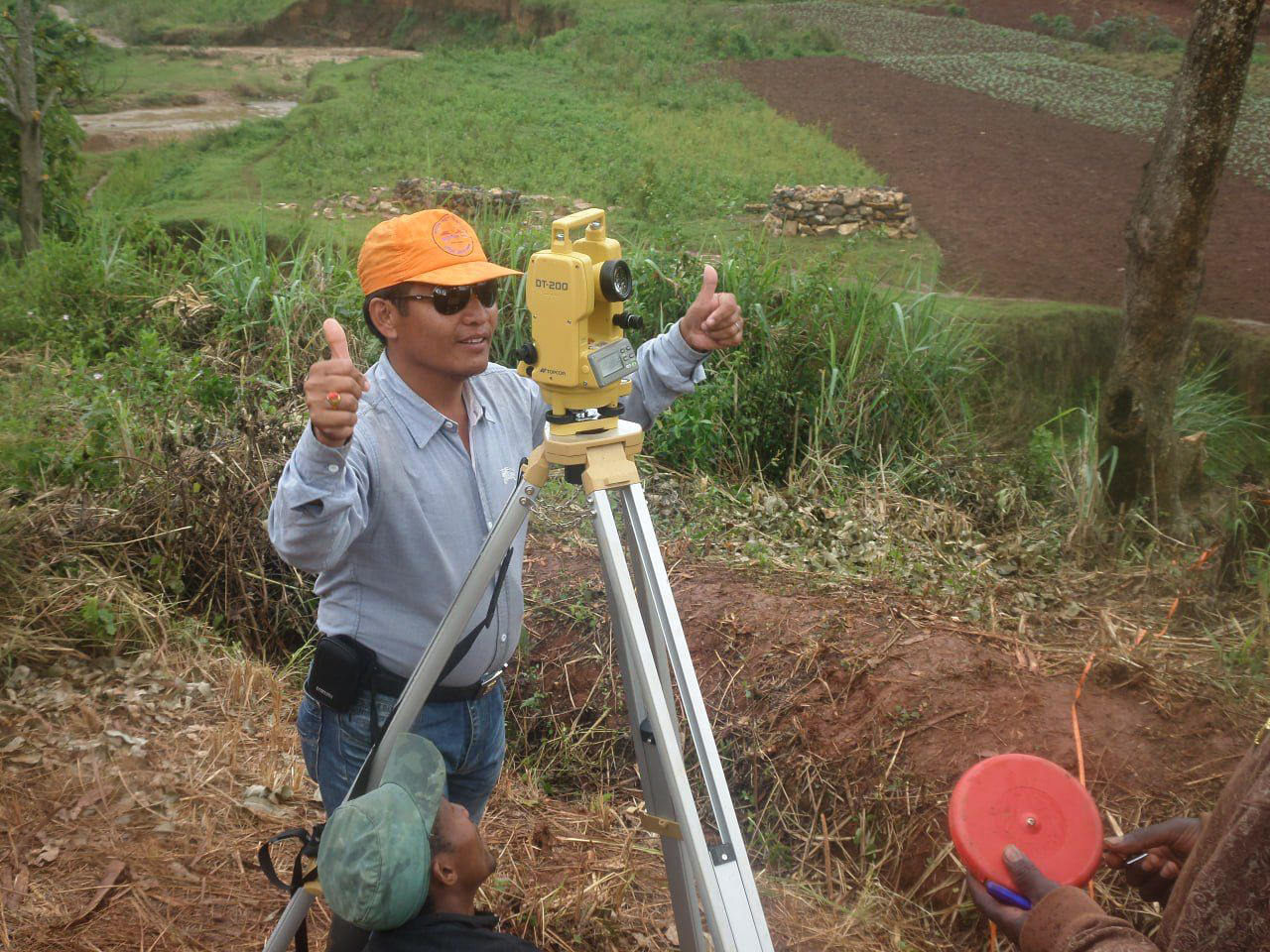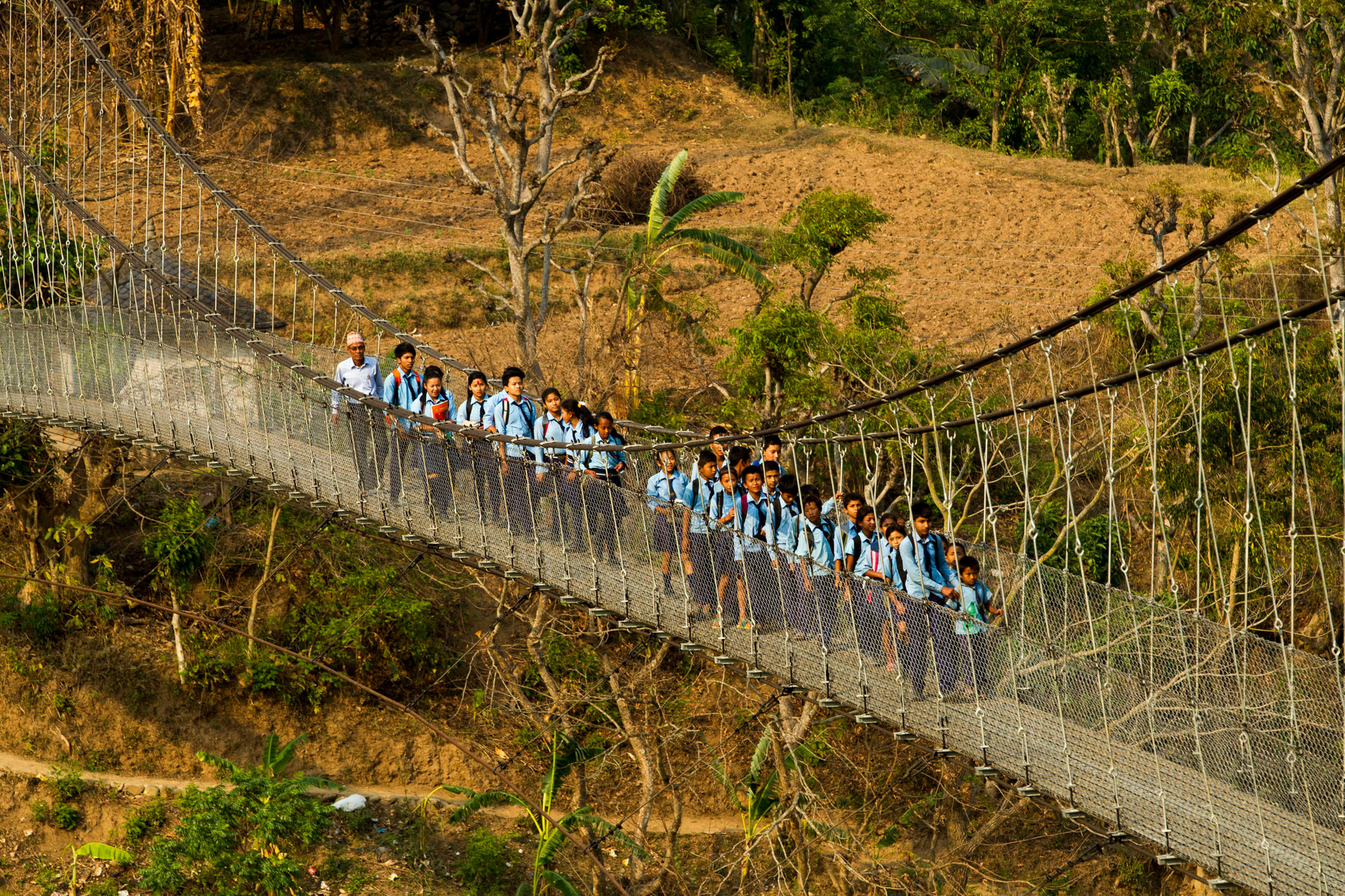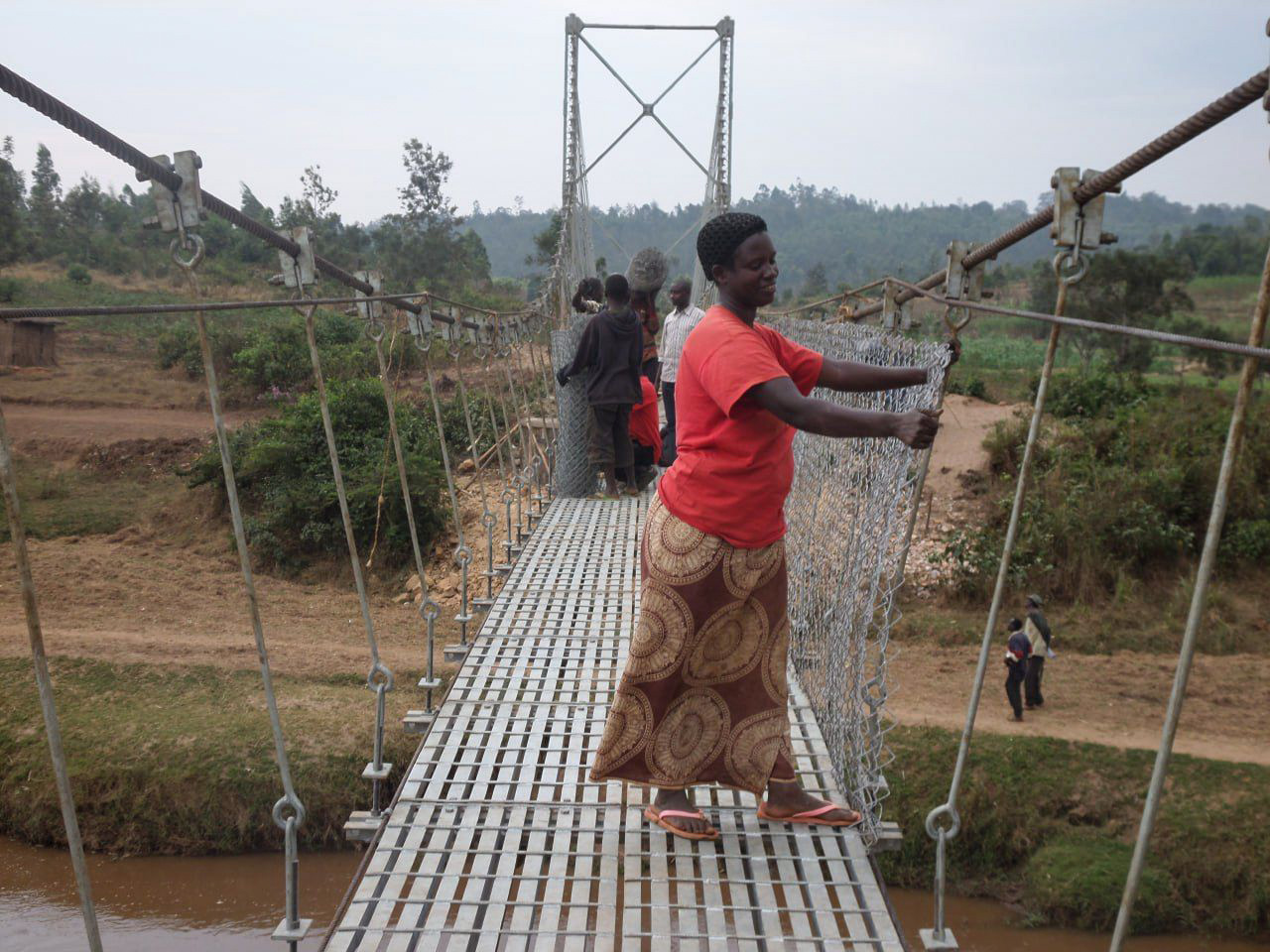
Building bridges in Nepal and Ethiopia with help from Switzerland

Last November saw the opening of the 10,000th suspension bridge in Nepal built with Swiss support. Nepalese professionals like Padam Gurung are now passing on their knowledge to nearly a dozen other developing countries.
Padam Gurung was born in a small Nepalese village in the Sindhupalchok region, some 120 kilometres from the capital Kathmandu. To go to school he had to cross a river using a simple wooden bridge. When he was thirteen, flooding tore the bridge away and Gurung couldn’t get to school for seven months.
Then a steel cable was spanned across the river and a wooden box attached to it, in which he was able to pull himself to the other side.
“Every crossing cost money,” Gurung recalls. The construction was not exactly secure either. It took a year for another bridge, a suspension bridge, to be built, which afforded him a safer crossing.
In 1996 Gurung took part in installing his own first suspension bridge, under the auspices of Swiss NGO Helvetas. “We had to transport the materials for the bridge on foot for ten days before we got to the actual location,” he says.
Since then, the 50-year-old engineer has been involved in building hundreds of bridges. He’s also providing his know-how to other countries, such as Burundi and Cameroon. Currently he’s working in Ethiopia providing advice on surveying and planning of suspension bridges.

A helping hand across the Global South
In the language of development work, this is an instance of South-South-cooperation, meaning a transfer of knowledge between people in countries of the Global South. Today Nepalese engineers and technicians are engaged in building bridges or doing feasibility studies in 11 different countries.
“There is considerable demand for this technology,” says Remo Gesù, deputy director and head of international programmes at Helvetas. According to data from the World Bank, 1.2 billion people, a third of the planet’s rural populationExternal link, do not have access to adequate roads and transport services. In Africa 420 million people – over 70% of the continent’s rural population – are in a similar situation.
Helvetas started getting involved with building suspension bridges in Nepal in 1960. Later the Nepalese government started its own department for suspension bridges and adopted a systematic approach to bridge-building.
The Swiss Agency for Development and Cooperation has been supporting the project since 1972. “First it was professionals from Switzerland training Nepalese staff,” says Gesù. “Now the Nepalese engineers are the experts.”
Some have even travelled to Switzerland to design bridges in this country. The opening of the 10,000th suspension bridge in Nepal in November 2023 capped this decades-long undertaking.
Simple approach, major effects
“The suspension bridge story is one of the major success stories of Swiss development work,” says Gesù. It shows that a simple approach can solve a whole range of problems. Evaluations by Helvetas have shown that the bridges raise incomes, as people can go to sell their produce at markets. They raise education rates, since more children are able to attend school (+16% for every bridge). They also improve public health, as more people are able to get to a doctor (26% more doctor visits per bridge).

In a country like Nepal, with its rugged landscape and over 6,000 rivers and streams, such developments cannot be taken for granted. About two-thirds of the Nepalese population (roughly 19 million people) are now benefiting from the improvements brought by the bridges.
What is more, democratic processes have come into play, as the population, experts and local governments plan the bridges together. “There is no bridge without the involvement of the inhabitants,” says Gesù. They participate actively in the work, such as by helping to bring in sand or break up large rocks.
At the outset, all building materials had to be brought in across the Himalayas from India. But with time the Nepalese private sector has built its own production capacity. There have been investments made in further expanding this capacity, developing manuals and training home-grown experts. The project participants eventually opened a skills centre in Kathmandu, from where local experts can be recruited and sent to various building sites.
From Nepal to Ethiopia
Gurung is now on his third posting to Ethiopia. In this assignment, which will last several months, the engineer will carry out quality inspections on 22 existing bridges. Then he will offer training to engineering students in the field. Ethiopia plans to build 150 more bridges by 2025. Building a road bridge over 120-metres long can take well over a year.
To start the ball rolling in Ethiopia, Helvetas suggested putting up a suspension bridge in the capital Addis Ababa first. “The people were enthusiastic, and the government adopted it right away,” says Gesù. Since then over a hundred bridges have been built in the African country using the model applied in Nepal.

Provincial governments decided which villages and regions need a suspension bridge most and assumed 60% of the costs. The other 40% came from Helvetas. “Our goal is now for governments to contribute 80%,” says Gesù.
Infrastructure projects like bridge-building are ideal for intensive South-South cooperation since the technology requires specialised knowledge. In other areas like water supply and agriculture, skills are more likely to be available within the country and international collaborations are less likely to be required.
The possibility for further South-South cooperation could, according to Helvetas, be found in West Africa, specifically in Burkina Faso, where the NGO is planning a skills centre for labour-intensive road-building.
In Nepal, Switzerland is getting out of the bridge-building business after 60 years. The Nepalese government is taking over full responsibility. Gesù of Helvetas says there is still plenty of need, though: some 4,000 more bridges are planned to connect the rural population together.
Edited by Marc Leutenegger
Translated from German by Terence MacNamee/gw

In compliance with the JTI standards
More: SWI swissinfo.ch certified by the Journalism Trust Initiative
















![The four-metre-long painting "Sonntag der Bergbauern" [Sunday of the Mountain Farmers, 1923-24/26] had to be removed by a crane from the German Chancellery in Berlin for the exhibition in Bern.](https://www.swissinfo.ch/content/wp-content/uploads/sites/13/2025/12/01_Pressebild_KirchnerxKirchner.jpg?ver=917ecbf2)















You can find an overview of ongoing debates with our journalists here . Please join us!
If you want to start a conversation about a topic raised in this article or want to report factual errors, email us at english@swissinfo.ch.